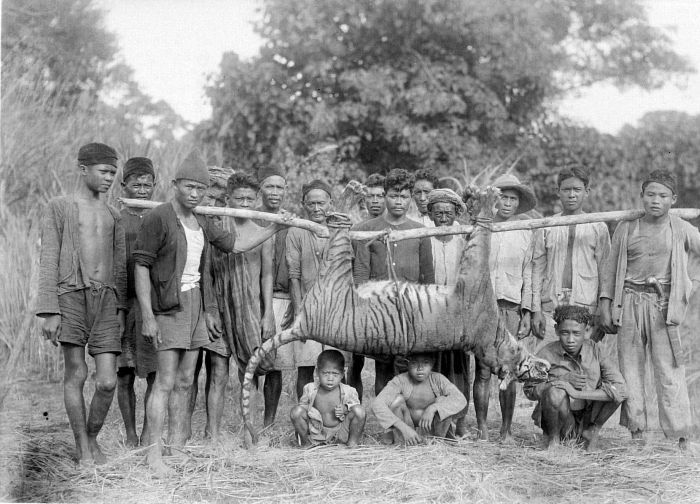Archivo:COLLECTIE TROPENMUSEUM Een groep mannen en kinderen poseert bij een pas geschoten tijger te Malingping in Bantam West-Java TMnr 10006636.jpg
COLLECTIE_TROPENMUSEUM_Een_groep_mannen_en_kinderen_poseert_bij_een_pas_geschoten_tijger_te_Malingping_in_Bantam_West-Java_TMnr_10006636.jpg (700 × 504 píxeles; tamaño de archivo: 83 kB; tipo MIME: image/jpeg)
Historial del archivo
Haz clic sobre una fecha y hora para ver el archivo tal como apareció en ese momento.
| Fecha y hora | Miniatura | Dimensiones | Usuario | Comentario | |
|---|---|---|---|---|---|
| actual | 07:35 27 nov 2009 |  | 700 × 504 (83 kB) | KITbot | == {{int:filedesc}} == {{Information |description=<!--{{id|1=To be translated}}--> {{nl|1=Negatief. Hoewel niet zo belangrijk als in India was de jacht in Indië voor veel Europeanen een onderdeel van het leven in de tropen. Voor sommigen was het tijdverd |
Usos del archivo
La siguiente página usa este archivo:
Uso global del archivo
Las wikis siguientes utilizan este archivo:
- Uso en af.wikipedia.org
- Uso en ar.wikipedia.org
- Uso en bjn.wikipedia.org
- Uso en ceb.wikipedia.org
- Uso en cs.wikipedia.org
- Uso en de.wikipedia.org
- Uso en el.wikipedia.org
- Uso en en.wikipedia.org
- Uso en et.wikipedia.org
- Uso en eu.wikipedia.org
- Uso en fa.wikipedia.org
- Uso en fi.wikipedia.org
- Uso en fr.wikipedia.org
- Uso en hu.wikipedia.org
- Uso en id.wikipedia.org
- Uso en it.wikipedia.org
- Uso en it.wikibooks.org
- Uso en jv.wikipedia.org
- Uso en lv.wikipedia.org
- Uso en nia.wikipedia.org
- Uso en nl.wikipedia.org
- Uso en ru.wikipedia.org
- Uso en sl.wikipedia.org
- Uso en su.wikipedia.org
- Uso en te.wikipedia.org
- Uso en tr.wikipedia.org
- Uso en uk.wikipedia.org
- Uso en vi.wikipedia.org
- Uso en www.wikidata.org

